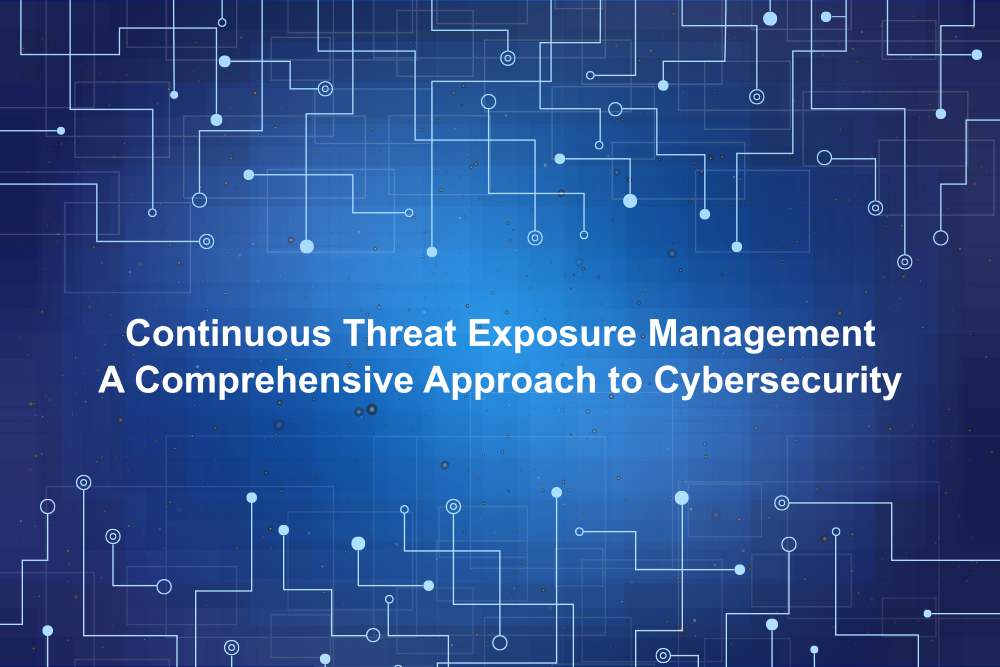In today’s digital world, organizations face an ever-growing number of cyber threats. As businesses expand their digital footprints, so too do the vulnerabilities and potential entry points for attackers. This increasing complexity has made it crucial for companies to adopt advanced security practices, one of which is Continuous Threat Exposure Management (CTEM). CTEM is an automated process for identifying potential vulnerabilities and security gaps in an organization’s digital attack surface. This approach is vital in maintaining the integrity of a company’s network and safeguarding its critical data from cybercriminals.
What is Continuous Threat Exposure Management?
CTEM is a proactive, automated method used to identify and mitigate potential threats within an organization’s digital ecosystem. Unlike traditional security measures that often rely on reactive responses to cyber incidents, CTEM focuses on continuously monitoring an organization’s infrastructure for weaknesses, exposures, and vulnerabilities.
By leveraging automated tools, CTEM helps security teams maintain a real-time view of the organization’s digital attack surface, including hardware, software, networks, and cloud environments. The aim is to prevent threats before they can exploit vulnerabilities, thereby reducing the organization’s risk of a successful cyberattack.
Why CTEM is Essential for Cybersecurity
Cyberattacks are becoming increasingly sophisticated, and the traditional “set-it-and-forget-it” security measures are no longer sufficient. Modern businesses need a dynamic approach that evolves with the threat landscape. CTEM offers several key benefits that make it an indispensable component of any robust cybersecurity strategy:
1. Continuous Monitoring: With CTEM, security systems are continuously monitored to ensure potential vulnerabilities are identified as soon as they emerge. This is especially critical in environments where new technologies or software are frequently introduced, as these can create new vulnerabilities that need to be addressed.
2. Real-Time Threat Detection: CTEM helps organizations identify potential threats in real time, allowing for faster and more accurate responses to any suspicious activity. This reduces the time attackers have to exploit vulnerabilities and helps prevent data breaches and other security incidents.
3. Proactive Defense: One of the most significant advantages of CTEM is its proactive approach. Rather than waiting for an attack to happen, it helps security teams fix issues before they can be exploited. This is a fundamental shift from reactive measures and enhances an organization’s overall resilience against cyber threats.
4. Comprehensive Coverage: As organizations scale, their digital attack surface grows, making it increasingly difficult to monitor manually. CTEM tools provide comprehensive visibility into all elements of the attack surface, including third-party integrations, cloud infrastructure, and even shadow IT (unsanctioned applications or devices).
Key Components of Continuous Threat Exposure Management
CTEM consists of several integrated processes that work together to provide a holistic view of potential risks:
– Asset Discovery: The first step in CTEM is to identify and map all assets within the organization, including hardware, software, networks, and cloud environments. This helps security teams understand the full extent of the attack surface and where potential vulnerabilities may lie.
– Vulnerability Assessment: Once assets are identified, CTEM tools continuously scan for vulnerabilities, outdated software, or misconfigurations that may expose the organization to risk. These scans are automated and happen in real-time, ensuring that vulnerabilities are identified promptly.
– Risk Prioritization: Not all vulnerabilities pose the same level of risk. CTEM tools help prioritize vulnerabilities based on factors such as the likelihood of exploitation and the potential impact on the organization. This allows security teams to focus their efforts on the most critical issues.
– Remediation and Mitigation: After identifying vulnerabilities, CTEM provides recommendations for remediation. Whether it’s applying patches, reconfiguring systems, or removing outdated software, CTEM ensures that security teams can quickly address vulnerabilities before they are exploited.
Real-World Applications of CTEM
Many organizations are already leveraging CTEM to protect their digital assets and ensure continuous security. For instance, large enterprises with sprawling IT infrastructures often struggle to keep track of every potential entry point for attackers. CTEM offers a centralized system for monitoring these environments and provides automated insights into where vulnerabilities exist, allowing for faster remediation.
In addition, industries with high regulatory compliance requirements, such as finance and healthcare, can benefit from CTEM by ensuring they continuously meet cybersecurity standards and avoid costly data breaches or compliance penalties.
Conclusion
In an increasingly interconnected world, cybersecurity is more important than ever. Continuous Threat Exposure Management offers a proactive, automated approach to securing an organization’s digital attack surface by continuously identifying vulnerabilities and prioritizing them based on risk. By integrating CTEM into their security strategies, businesses can stay one step ahead of cybercriminals, minimizing their exposure to threats and safeguarding their critical assets.
By adopting CTEM, organizations can move beyond traditional reactive measures and embrace a forward-looking, dynamic approach to managing cyber threats. This ensures that security teams are equipped to handle the ever-evolving threat landscape, reducing the risk of successful cyberattacks and ensuring the continued safety of critical data.
Want to understand more about Continuous Threat Exposure Management? Join exclusive event hosted by our partner, PICUS Security. Click Banner below to join

